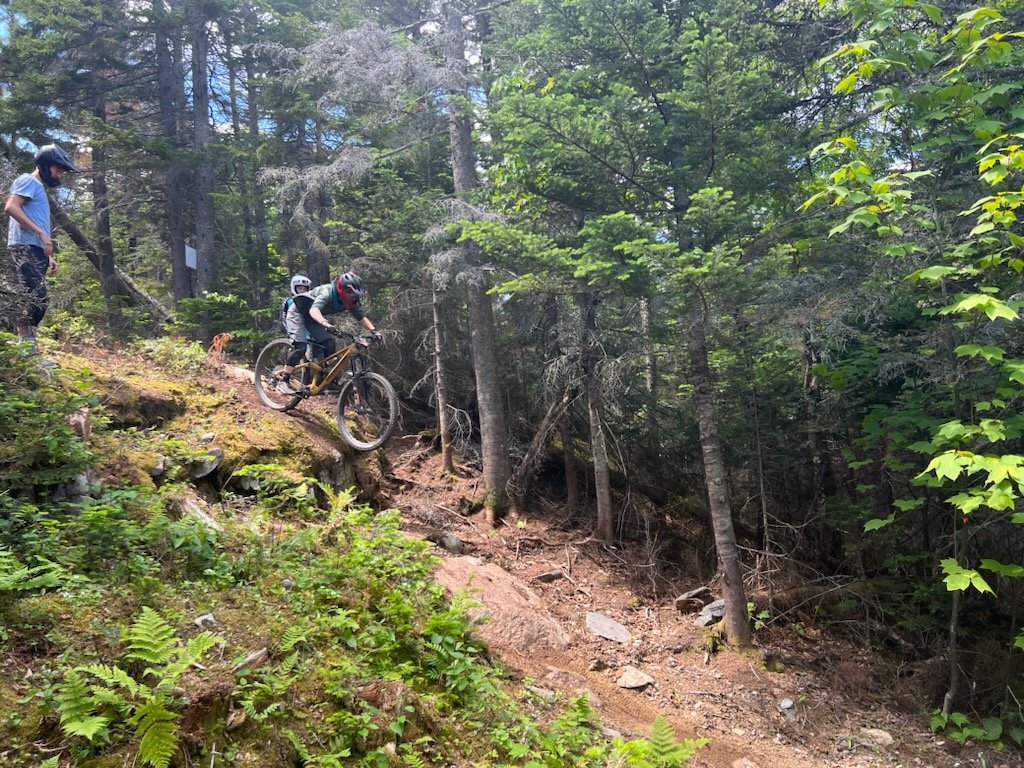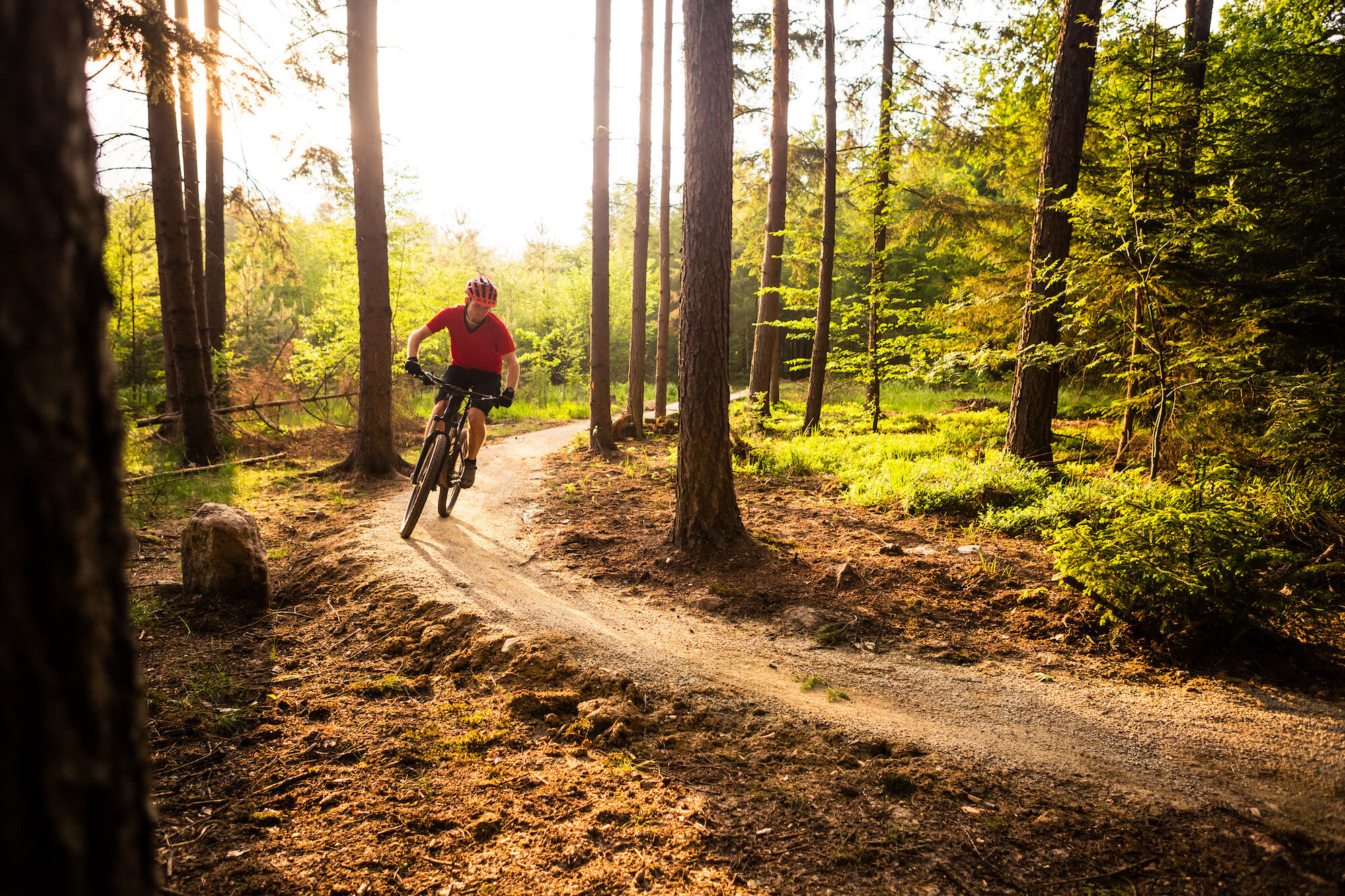
Gravity
Stowe Mountain Bike Academy
Junior & Elite Gravity Race Programs

Junior & Elite Gravity
Juniors: Ages 13+, Elite: Ages 16+
RIDER REQUIREMENTS:
Rider has completed SMBA Develop Program, Progression Program through Freeride, SMBA Race Team returning athlete or can demonstrate similar advanced skill achievements
Rider has at least two seasons of race experience at Eastern States Cup (or equivalent) and competes in the U18, U21, Amateur or Pro Categories
Rider has basic mechanic skills and can perform trail-side repairs
Rider has completed the SMBA Race Team Application and has demonstrated a desire to train, work towards a goal, and be a compassionate and respectful member of the SMBA Race Team
Program Highlights:
Experienced Coaches: Our team of experienced coaches is dedicated to helping riders reach their full potential and achieve their racing goals through a structured training environment.
Customized Training: We understand that every rider is unique, which is why we provide individualized training plans in combination with team practices to help you improve your performance on the racecourse.
Race Preparation: From course walkthroughs to strategy sessions, we cover all aspects of race preparation to ensure that you are ready to perform at your best on race day.
Program Structure:
Typical training structure in the Gravity Race Programs includes two coach lead practices per week plus support at races, individual ride assignments, and the option to participate in a strength and conditioning program with Champlain Valley Community Fitness. The practice/training schedule is managed in 4-6 week blocks with some flexibility in the training plan in response to weather, race results/upcoming races, and assessment of needed rest. In summer, or Phase 3 training, please expect more travel (SMBA Van) to anticipated race venues for race venue-specific training.
We offer two training divisions:
Junior Division: Designed for riders aged 13-16 who are passionate about mountain biking and eager to enhance their racing abilities in gravity focused events.
Elite Division: Geared towards experienced riders aged 16-19 who are seeking intense training and competition in the gravity racing scene.
Junior programs provide a foundation for skills, progresses riders to complete full stage races, and promotes a love for the sport, while elite programs refine those skills, intensifies training, and prepares riders to compete in advanced racing categories such as U18 (DH), U20, Amateur, and Pro. It is expected that the Junior and Elite divisions will practice on different days in order to meet the distinct training needs of the participants within each group.
SMBA’s Gravity Race Program has a seasonal approach to training with the goal of optimizing performance, preventing burnout, and peaking at the right times during the season.
-
Objective:
Establish a foundation of fitness.
Build aerobic endurance and muscular strength.
Key Activities:
Assess your current fitness level and technical skill strengths and weaknesses
Set specific and measurable goals for your gravity racing season, considering both short-term and long-term objectives.
Base mileage on the bike, incorporating longer rides.
Strength training focusing on general fitness.
Technical skill drills for overall improvement.
-
Objective:
Increase intensity and power.
Begin race-specific skill development.
Key Activities:
Introduce high-intensity interval training (HIIT).
Technical trail rides with an emphasis on race scenarios.
Fine-tune bike setup based on performance feedback.
-
Objective:
Fine-tune race-specific skills.
Increase intensity and simulate race conditions.
Activities:
Race simulations to practice pacing and transitions.
Technical drills on race-like terrain.
Specific strength training for power and explosiveness.
-
Objective:
Peak fitness and skills for key races.
Execute race strategies effectively.
Activities:
Increase volume of race events.
Race-day simulations for mental preparation.
Active recovery between races.
Monitor and adjust training based on race performance.
-
Objective:
Maintain performance and address any weaknesses.
Plan for potential late-season peaks.
Activities:
Active recovery and mental preparation.
Review practice schedule for strategic rest or tapering before ESC finals.
Prioritize recovery to minimize fatigue and prevent overtraining.
Incorporate rest days, active recovery, and proper sleep into your training plan.
Utilize recovery techniques such as foam rolling, stretching, and massage therapy if needed.
The SMBA Gravity Race Program incorporates several training objectives within each phase to provide focus, structure, and a roadmap for athletes to improve their skills, endurance, and overall performance.
By focusing on these training objectives, riders enhance their overall performance and readiness for racing. Additionally, our experienced coaches work closely with each rider to provide personalized feedback and guidance to help them reach their full potential by offering a dynamic training program featuring continuous feedback and implementation. Understanding strengths allows riders to leverage them to their advantage, while acknowledging weaknesses opens up opportunities for growth and development.
Complete program goals and targets available once registered. Have questions, please contact us at info@stowemtb.com.

Bike & Gear Requirements
Bike Requirements
• Full suspension mountain bike
• Hydraulic disc brakes
• Tubeless tires
• Dropper Post
Please have a shop or qualified technician make sure the bike is in good shape and functioning properly. While it is not necessary to have the nicest parts, riding and racing rough trails requires modern, durable componentry. If you are unsure of your bike or component quality, get in touch and we will be happy to help.
Gear requirements
• Helmet (“half shell” or “trail”). Elites: Full face and kneepads (ideally enduro style kneepads that can be comfortably worn while climbing
• Gloves, full finger length
• Mountain bike specific shoes
• Hydration backpack, should fit at least 1L bladder and 2 PBJs (A large hip pack is OK, but a backpack with chest/hip straps is preferred)
• Water bottle
• Multitool (Crank Brothers m17 or similar)
• Spare inner tube (and CO2 or mini-pump)
• Spare master chainlink
• Chest protectors and elbow pads are highly recommended for lift service
Please reach out with any gear questions/recommendations. Coach Ross Scatchard: ross@stowemtb.com

Pre-season Equipment Check
Unless you’ve been keeping your bike in the living room through the winter, dusting it and rotating the tires, chances are there may be a bit of spring maintenance needed.
Here’s a good spring maintenance checklist:
Suspension - If the stanchion seals are dry and a service didn’t get done last season, get into a shop before the racing season starts. The standard service intervals are 50hrs of riding (basic) and 200hrs (full) and it helps keep the bike nice and plush.
Sag - Chances are we grew a bit over the winter, so we need to calibrate our suspension settings. A benchmark for suspension sag is 25% when in a static ready position. Get to 25%, then fine tuning can be done on the trail.
Drivetrain - How is your bike shifting? Is it clunking or sticking between gears?
If so, it may be time for a fresh chain, cassette, or chainring. If shifting gears feels like a thumb workout, a new shift cable and housing will help.
If it shifts well, then give the chain, derailleur, and cassette a good scrub with a biodegradable degreaser and rinse off. Let it dry, then apply a light coat of your favorite chain lube. Let it soak in for as long as possible, but wipe it clean before going out on the dirt roads (an overly-oiled chain attracts grit).
Brakes - We want at least half of the brake pad to still be present (about 1.5mm).
New pads are relatively cheap. Make sure to replace them before they grind all the way down to the backing plate, otherwise rotors will need to be replaced.
Brake bleed - If they are spongy, make sure to bleed them. A brake bleed is quick for a shop (or at home with the right tools) to get them feeling like new.
Tires- Too many parking lot skids last fall? Are the threads showing on the sidewalls?
Before the season starts, we want fresh, sticky rubber, and sharp edges on the knobs for maximum grip.
Sealant dries up and becomes less effective over several months. Remove that valve core and add 2oz per wheel. This may need to be repeated once or twice throughout the season.
Bolt check - There are lots of bolts holding everything on our bike together and rotating or pivoting smoothly. It is very important to check that all the bolts are at the correct tightness (torque), and there isn’t play or friction in the moving parts of our suspension and steering. Some bolts require grease, some loctite, and some carbon fiber paste. If in doubt, ask a bike shop, or SMBA coach about bolt specifics.
Check that all bolts are snug and there is no play, or clunky movement, on parts of your bike.

PRE-Ride BIKE CHECK
Air - The tires should feel like a ripe orange. Too much air can be almost as bad as too little. Also, inspect the tires for any cuts, worn tread, or signs of excessive wear.
Brakes - The brakes should engage at approximately half the distance from a resting Position to all the way against the bar. Make sure the disc rotors are tight and both levers squeeze and return smoothly.
Chain - A clean and lightly lubricated (bike specific chain lube is best) chain keeps those gears happy. Give it a good clean and run through the gears to make sure all the gears are shifting easily.
Quick Release - Check the quick release or wheel axles. They should be snug! You can also double check by trying to wiggle the wheels side to side with your hand and feeling if there is any play.
Headset - Make sure the headset is snug by turning the front wheel 45 degrees to the left and squeezing the front brake. With your right hand, hold the space between the headtube and the stem and gently rock the bike back and forth. We don’t want to feel any play with our right hand. If you do, loosen the stem bolts, tighten the bolt at the center of the headset cap until the fore/after movement of the headset is gone, but the headset still rotates smoothly. Then tighten the stembolts again – with a torque wrench.

